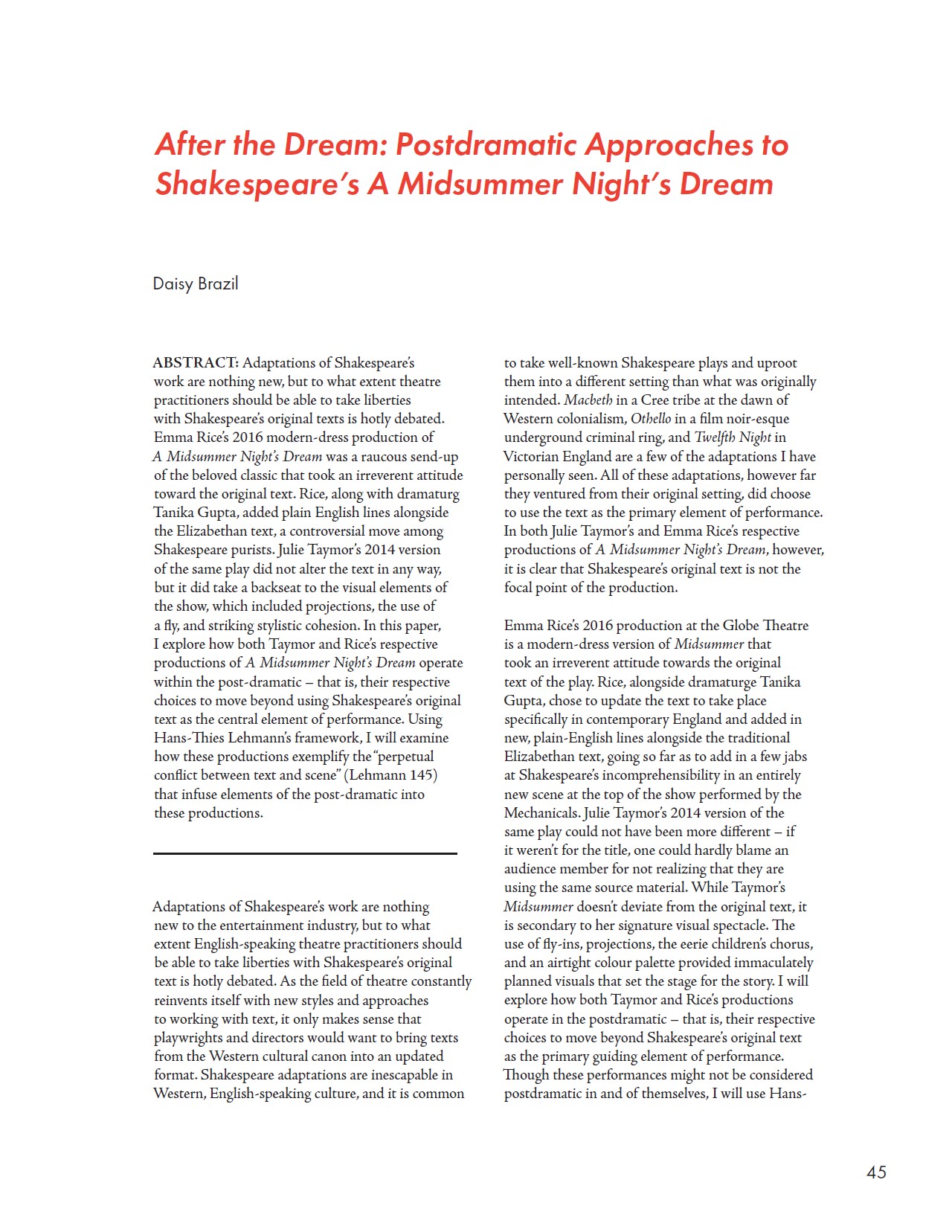After the Dream
Postdramatic Approaches to Shakespeare's "A Midsummer Night's Dream"
DOI:
https://doi.org/10.29173/crossings218Keywords:
Shakespeare, Theatre, Theater, Postdramatic Theatre, Shakespeare Adaptations, Contemporary Theatre, British Theatre, Globe TheatreAbstract
Adaptations of Shakespeare’s work are nothing new, but to what extent theatre practitioners should be able to take liberties with Shakespeare’s original texts is hotly debated. Emma Rice’s 2016 modern-dress production of A Midsummer Night’s Dream was a raucous send-up of the beloved classic that took an irreverent attitude towards the original text. Rice, along with dramaturg Tanika Gupta added plain-English lines alongside the Elizabethan text, a controversial move among Shakespeare purists. Julie Taymor’s 2014 version of the same play did not alter the text in any way, but it did take a backseat to the visual elements of the show which included projections, use of a fly, and a striking stylistic cohesion. In this paper, I explore how both Taymor and Rice’s respective productions of A Midsummer Night’s Dream operate within the postdramatic – that is, their respective choices to move beyond using Shakespeare’s original text as the central element of performance. Using Hans-Thies Lehmann’s framework, I will examine how these productions exemplify the “perpetual conflict between text and scene” (Lehmann 145) that infuse elements of the postdramatic into these productions.

Downloads
Published
Issue
Section
License
Copyright (c) 2024 Daisy Brazil

This work is licensed under a Creative Commons Attribution 4.0 International License.

